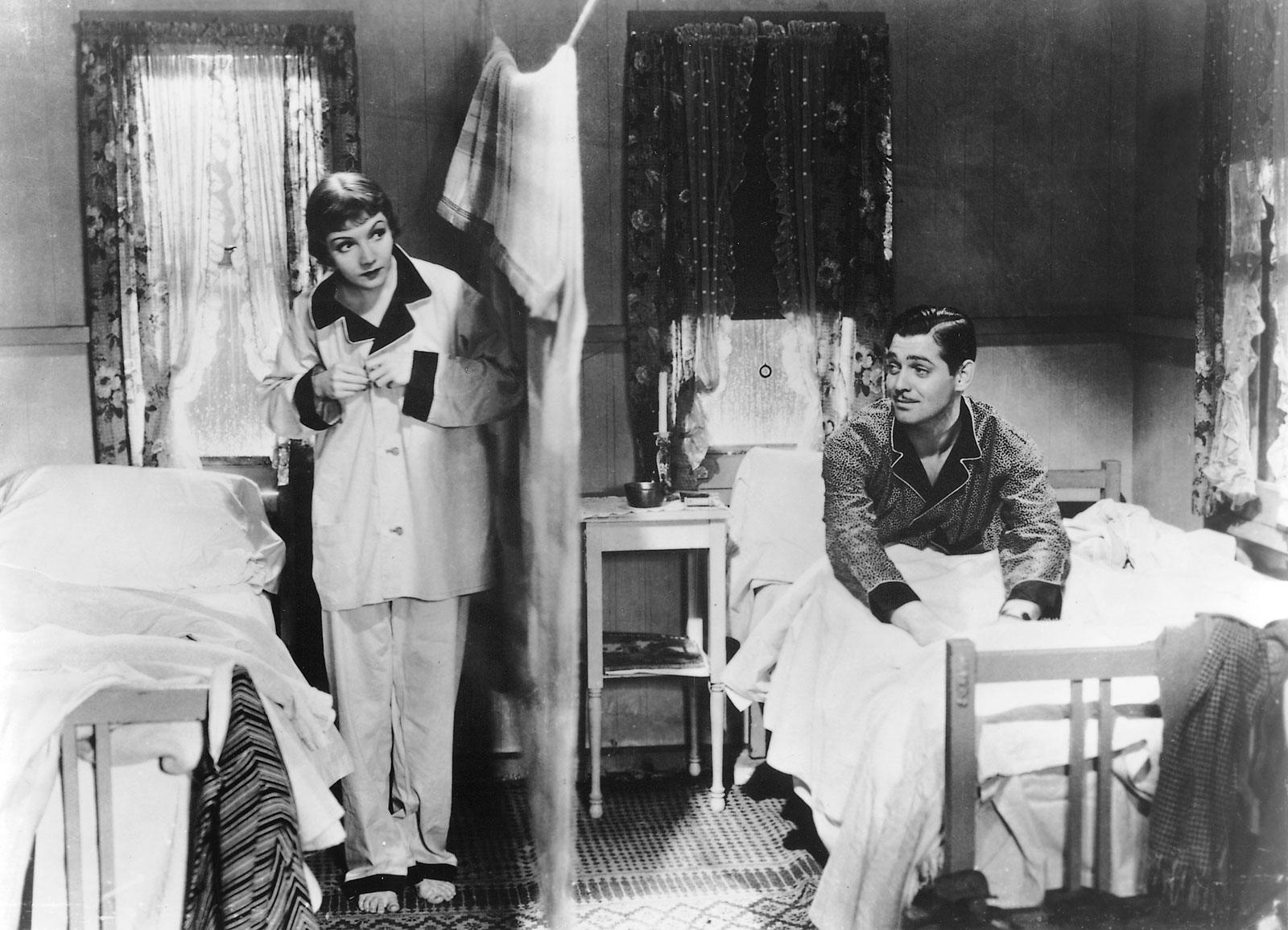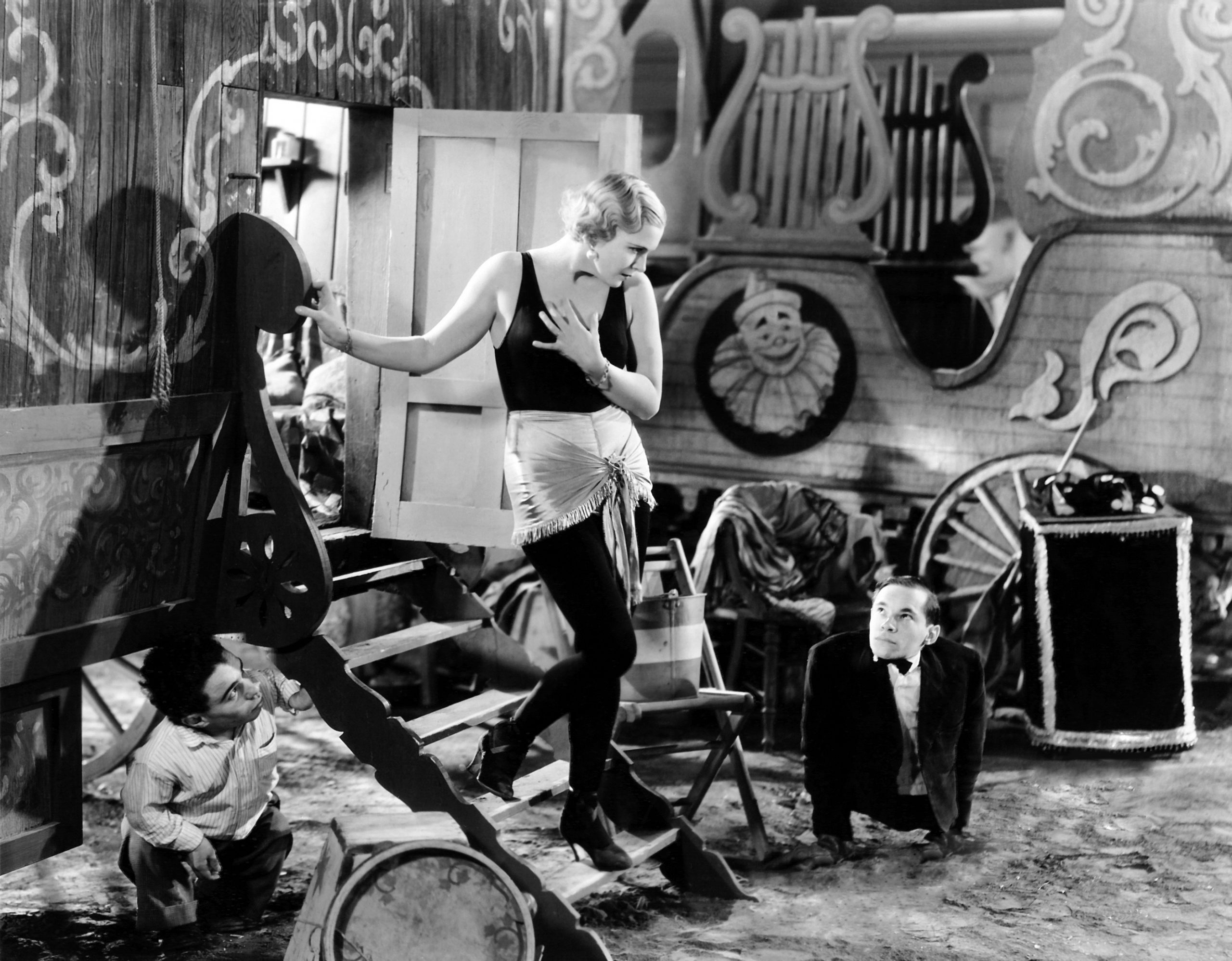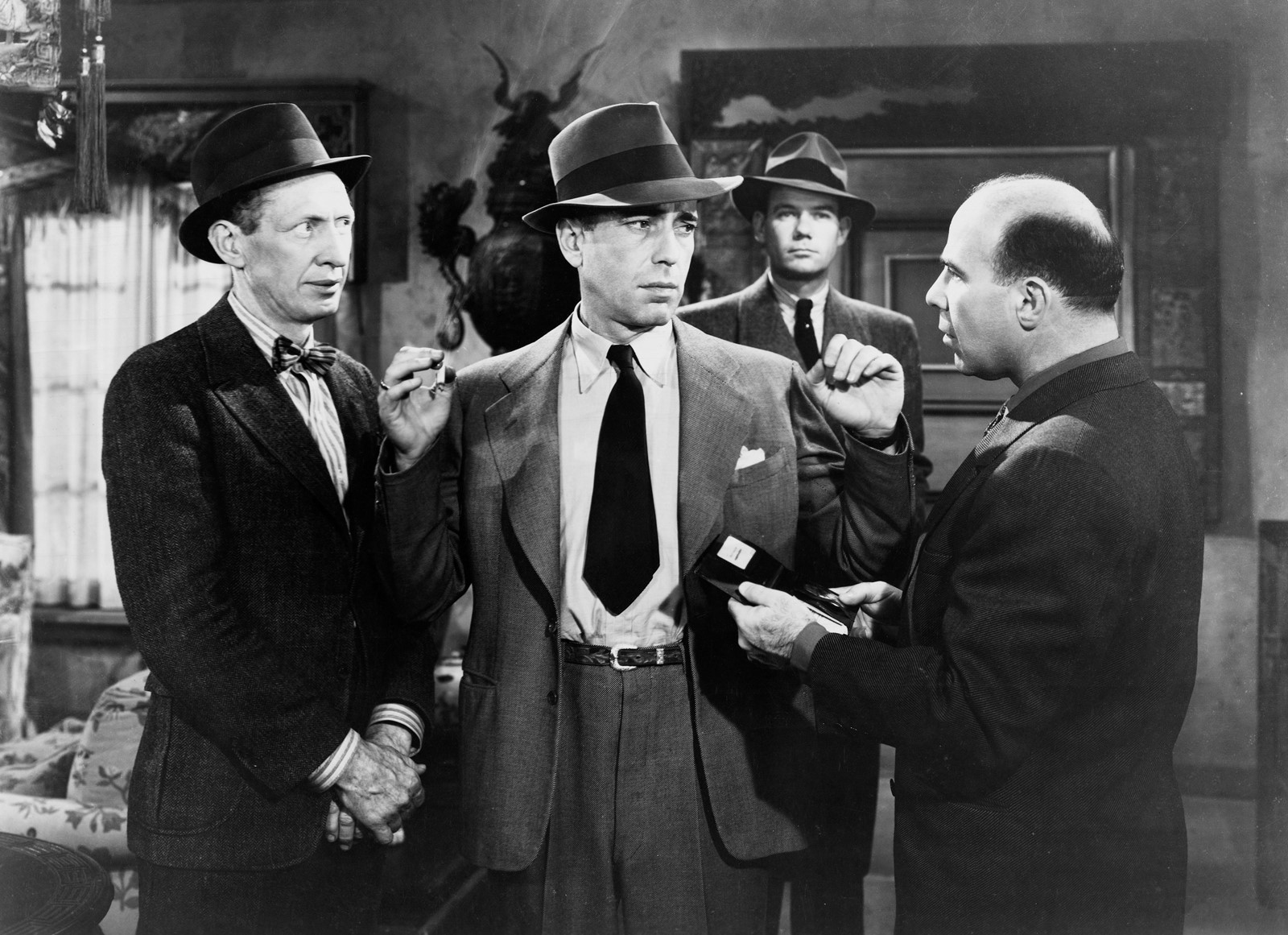Can one film save a failing movie studio? If the film is It Happened One Night (1934), it can. Columbia Pictures needed a hit in order to survive, and it was a gamble for the studio to spend $325,000 on this project, especially since several bus-related movies had recently failed at the box office. Fortunately, everything clicked, and It Happened One Night became the sleeper hit of 1934. It went on to become the first film to sweep all five major Academy Awards: Best Picture, Best Director, Best Actor, Best Actress, and Best Screenplay. Yet immediately after she had completed filming her scenes, Claudette Colbert had told her friends, “I’ve just finished the worst picture in the world.”
If you know director Frank Capra’s later comedies, such as Mr. Deeds Goes to Town (1936), Mr. Smith Goes to Washington (1939), and It’s a Wonderful Life (1946), you may be surprised by the restrained sentimentality in this one. Part of what makes this comedy so enduring is its in-your-face banter that doesn’t take itself too seriously. Robert Riskin wrote the screenplay, based on the short story “Night Bus” by Samuel Hopkins Adams. The script moves at a quick pace, and its self-deprecating humor resonated with depression-era audiences who were trying to cope with financial pressures.
Here’s a scene between Peter Warne (played by Clark Gable) and Alexander Andrews (played by Walter Connolly):
Alexander Andrews: Oh, er, do you mind if I ask you a question, frankly? Do you love my daughter?
Peter Warne: Any guy that’d fall in love with your daughter ought to have his head examined.
Alexander Andrews: Now that’s an evasion!
Peter Warne: She picked herself a perfect running mate – King Westley – the pill of the century! What she needs is a guy that’d take a sock at her once a day, whether it’s coming to her or not. If you had half the brains you’re supposed to have, you’d done it yourself, long ago.
Alexander Andrews: Do you love her?
Peter Warne: A normal human being couldn’t live under the same roof with her without going nutty! She’s my idea of nothing!
Alexander Andrews: I asked you a simple question! Do you love her?
Peter Warne: YES! But don’t hold that against me, I’m a little screwy myself!
Some film historians cite It Happened One Night as the first screwball comedy. Whether that’s the case depends on how you define a screwball comedy. It opened earlier in the year than Twentieth Century (1934) and The Merry Widow (1934), yet it was released one year after Duck Soup (1933) and two years after Trouble in Paradise (1932). It’s certainly one of the first screwball comedies and easily one of the best.
It Happened One Night
(1934; directed by Frank Capra)
The Criterion Collection (Blu-ray)
Sony Pictures (DVD)
Wednesday, December 4 at 8:00 p.m. eastern on Turner Classic Movies









